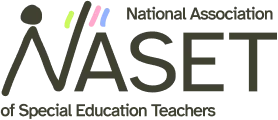Cheryl Ostryn, PhD, BCBA-D, LBA
Center for Applied Behavior Analysis, The Sage Colleges
Abstract
Spinal Muscular Atrophy is a genetic, degenerative disorder, in which individuals become unable to engage in typical motor activities, including speech. The outcome for the most common type of SMA (Type 1), has previously been death before the age of 2, but new medical improvements are showing promising results for life longevity. Research has demonstrated that individuals with SMA 1 have normal cognitive ability, but there is a total lack of research into teaching them to expressively communicate. For other neuromuscular disorders, it is common for individuals to utilize augmentative and alternative communication (AAC) methods, but unfortunately individuals with SMA 1 have not been included in this population. This study is the first of its kind, as it utilizes the use of picture communication systems for successfully teaching young children diagnosed with SMA 1 to mand for items within the same timeframe as their typically developing peers.
Read or Download Instructions
-
To Read or Download this Article – Click Here
-
To Download the FALL 2021 Issue of JAASEP – Click Here
